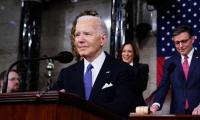The rise of the Sangh Parivar – Rastriya Swayamsevak Sangh (RSS) and its affiliate organizations – in India has unhinged two largely stable equilibria of co-existence in South Asia: a) an unjust but stable inter-communal equilibrium within India; and b) a military balance in the larger region, underwritten by a mutually destructive atomic capability coupled with the low risk-appetite of the Indian leadership.
The Sangh Parivar’s expansionist fascist ideology and its appetite for high-risk behaviour has changed the very calculus of decision-making with two principal implications: a Hindutva-centric homogenization project within India, and a sustained campaign to dominate India’s near abroad (what Veer Savarkar, Sangh Parivar’s intellectual guru, once called Akhand Bharat or Greater India).
The crafting of any effective strategic response to India’s territorial ambitions requires the determination of three key questions: i) will the global power structure led by the US allow New Delhi to pursue its expansionist agenda while simultaneously facilitating its trajectory of economic growth; ii) will India’s secular elements be able to halt or possibly wheel back the chariot of Sangh Parivar; and iii) will the ethos of the Parivar itself transmute to a more tolerant strain due to the constraints of mainstream politics.
Unfortunately, the answer to our first question is disappointing. In its quest to contain China’s economic and military ascent, the US views India as the only viable countervailing Asian power. Therefore, humanitarian concerns and any preference for democratic pluralism will be outweighed by the imperatives of strategic partnership. Hence, the cost of religious persecution and cross-border bullying is likely to be limited, possibly negligible.
To answer the second and third questions, we need to understand the nature of the Sangh Parivar’s ideology, its level of permeation in Indian society and its modus operandi. Since its launch in Nagpur by Dr K B Hedgewar in 1925, RSS has successfully forged an ultra-rightist Hindu rashtra (nation) out of a motley of Indian religious traditions. It has captured the imagination of Hindu middle classes and has almost completely ‘othered’ the Muslim and Christian minorities: the SC verdict on Babri Masjid and revocation of the special status of Jammu and Kashmir are only recent manifestations of such ‘othering’.
Today, the Sangh Parivar has branched out into every conceivable sphere of collective action in Indian polity. Its affiliate organizations have massive outreach with tens of millions of registered members. These organizations are congenitally wired at the grassroots level through a five-million strong, uniformed force of swayemsevaks (volunteers), that meets one hour each day for physical training and indoctrination under the shadow of a saffron flag.
In order to steer its affiliate organizations, RSS capitalizes on its elite corps of parcharaks (ideologues). Less than 3000 in total, the parcharaks are a carefully selected and patiently trained lot. Of high personal character and ascetic disposition (mostly celibates), they are extraordinary managers, the Hindutva equivalent of the ICS cadre of British India. They serve the affiliate organizations on deputation as the steel frame of the Sangh Parivar and thus ensure a kind of bureaucratic federalism. Unless directed otherwise, they strictly avoid a high public profile.
Against such a formidable ideological and political machine, no all-India secular party stands a real chance; nor can the constitutional machinery effectively challenge such an authoritarian apparatus. At the local level, the civil administration and police have been largely baptized to the Hindutva creed. Likewise, the higher judiciary and independent media have also started to melt before the majoritarian will of the neo-rashtra.
Lastly, any chance of self-transformation by the Sangh Parivar is precluded due to the mind-molding process unleashed at the school level. Textbooks are being revised by RSS activists like Dinanath Batra, the controversial crusader for a Hindutva-centric revision of textbooks. Now, the Mughal period is the Dark Age of India; even Muslim children in Rajasthan learn that Akbar the Great was an alien dacoit and that the Mughals actually lost the Battle of Haldighati. Under the new curriculum, kids are required to draw a map of Akhand Bharat that includes both Afghanistan and Burma.
On this side of the border, these innovations in geography and history might sound absurd but for the Hindutva creed, it has been an article of faith for more than a century. Back in 1925, Lala Hardayal, a right-wing Hindu intellectual, advocated for “Shuddhi [reconversion] of Moslems” and for the “conquest and Shuddhi of Afghanistan and the Frontiers” on the pages of Paratap, the most popular Hindu daily then published from Lahore.
Whether we like it or not, the Sangh Parivar is here to stay, at least for a few decades. Therefore, it is time to recraft our long-run strategy to counter the Hindutva hazard so vividly visible on our eastern horizon.
The writer is a practitioner of design thinking and implementation in the public sector.
Email: rashidlangrial@gmail.com
As usual, any such deal, aiming to resuscitate ailing economy, brings to fore urge and resolve to halt further...
A representational showing sticky notes on a board. — Unsplash/FileThere are some common themes from the lives...
Whether the Daanish Schools effort has been able to live up to its principles or not may be debatable
According to the federal government, last year 653,100 people experienced homelessness on a single night in America
Another advantage for Pakistan is the enhanced teledensity and internet penetration
Both media spheres need to dovetail in amplifying the urgency of addressing climate change at the local, national, and...







